Epazote: A tasty addition to your medical kit
NAME: EPAZOTE (Dysphania ambrosioides); (formerly Chenopodium ambrosioides)
Epazote is also known as Mexican tea or wormseed and is a member of the goosefoot family.
DESCRIPTION
Probably the most distinctive aspect of epazote is its unique aroma. And when seen for the first time, it might appear as a somewhat ragged and darker-green lamb’s quarter (to which it’s related).

The plant has a branched stem that can reach up to about 3 feet. Its shiny, green leaves are elliptical, 2 to 5 inches long and sometimes reddish tinged or blotched. Epazote’s uniquely aromatic leaves are arranged alternately. The undulating leaf margin is slightly or entirely toothed. The leaf surface is hairless, although it might be slightly “tomentose” (covered with densely matted hairs) when very young.
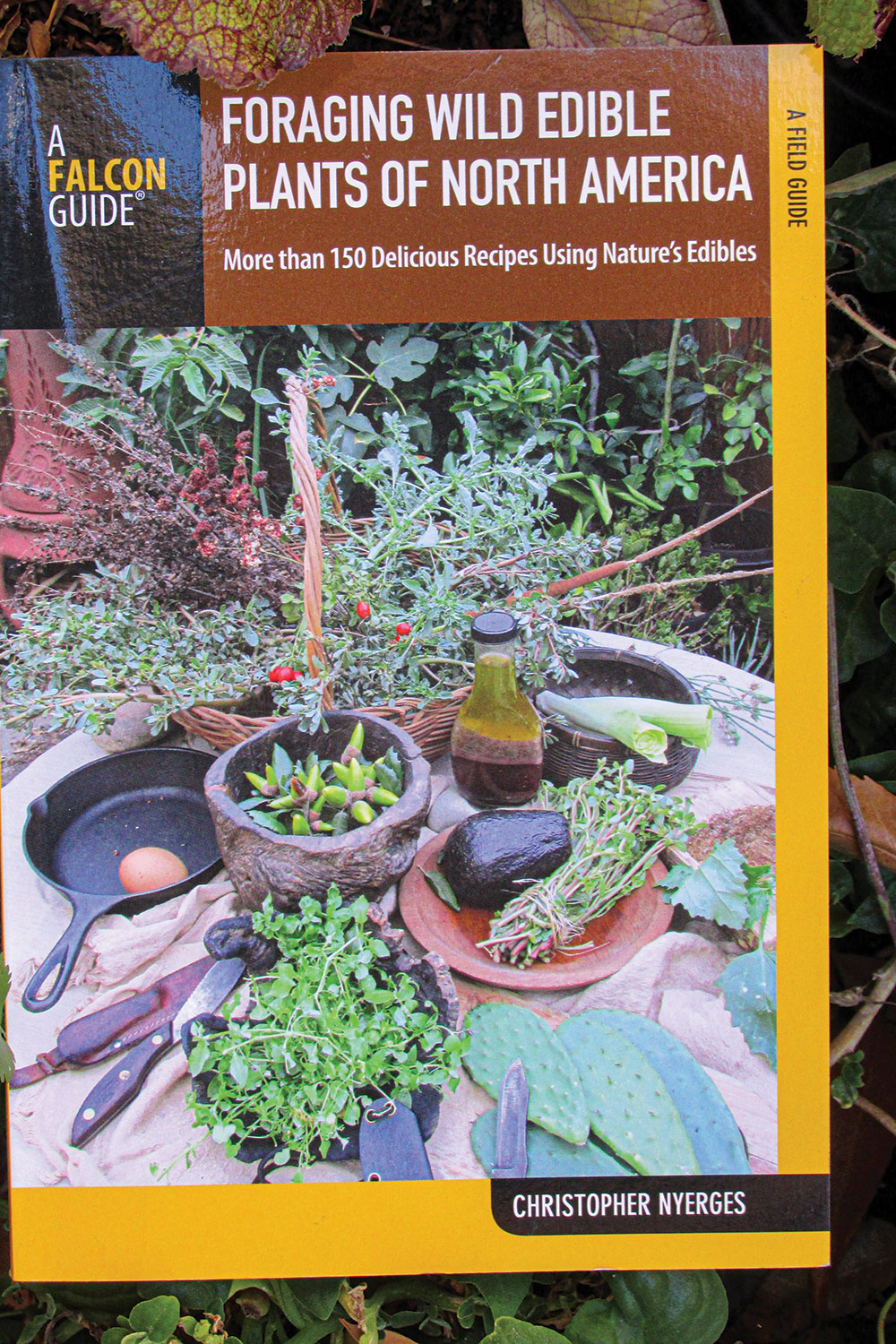
WHERE FOUND
Epazote is abundant along inland stream beds in sandy soil and common in seaside salt marshes. The plant, which is sometimes cultivated, generally prefers waste locales and areas with somewhat poor, sandy soil. It seems to prefer the semi-shade along the bank of a sandy river or stream but will do well in rich garden soil when cultivated. Believed to have originated from central Mexico, it’s now well naturalized throughout parts of the United States.
USES
Epazote has long been popular in Central and South American and Mexican cuisine as a culinary spice, especially in bean dishes (because it prevents gas). It adds a unique flavor to beans; and, as an herb, it’s as cherished as cilantro by some.
To use epazote, crumble dried leaves into a pot of beans or add some fresh leaves, depending on your particular taste preference.
PROCESSING
Although fresh epazote leaves can be added to dishes, the plant is usually dried first, which somewhat mellows the fragrance. The dried leaves are then crumbled into a pot of beans or a stew shortly before being served.
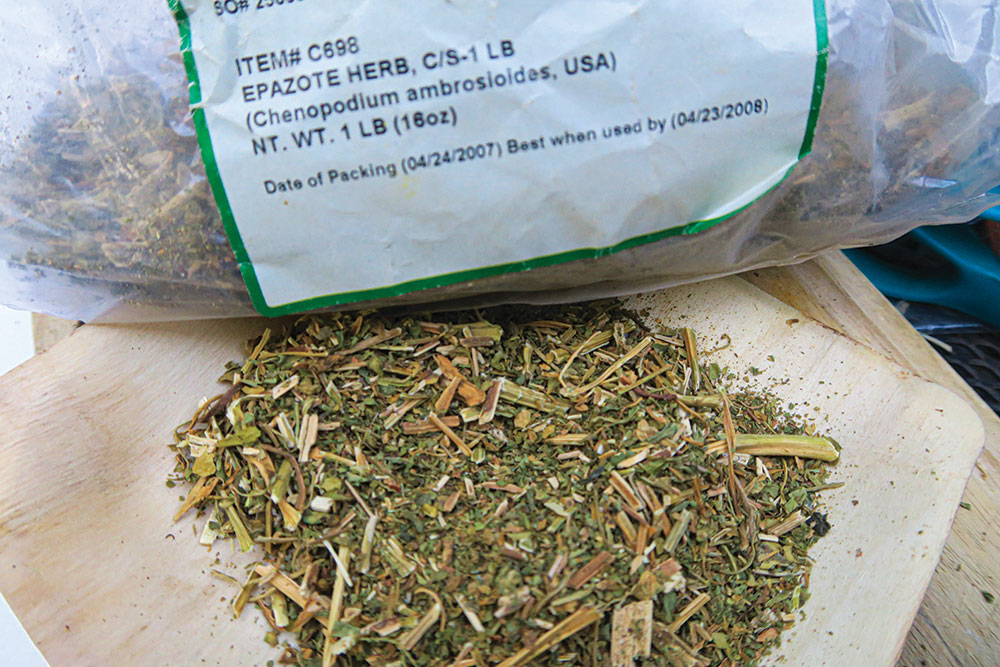
ADVICE FOR GROWING
Epazote can be successfully grown from cuttings that have been rooted in good soil or vermiculite. However, most gardeners start them from seed.
Soak the seeds for a few hours in water before planting; plant them in a flat or directly into the garden. The seeds seem to take longer to sprout than other seeds, and gardeners often forget they’ve even planted them. So, make sure to label your plantings.
WHEN TO HARVEST/AVAILABILITY
In colder climates, epazote will live as an annual. In the South and warmer environments, it’ll act more as a perennial and will come up for a few seasons.
Harvesting the midsized epazote plants is easy: Just pinch off the top of the new growth, taking only what you need. Alternatively, if you plan to dry some of this herb for storage, pinch it back a lot.
The leaf production of each epazote plant is greatly increased by pinching. The entire aboveground plant will die back each year, but as long as the soil hasn’t dried out, the roots will continue to produce. Also, regularly pinching back the leaves during the growing season will significantly extend the growing season for your epazote plants.
The leaves are best harvested young and then dried. I prefer using only the leaves in my cooking. However, you’ll observe that in Mexico, the entire aboveground plant is harvested, dried and ground up for use or for sale.
MEDICINE/NUTRITION
Epazote is most famous for its use as a way to prevent or stop excessive gas. Think of it as nature’s “Beano”! It’s one of the best-recognized anti-flatulents and aids digestion, as well.
It also acts as a “vermifuge”—expelling intestinal worms (such as roundworms and hookworms) and other intestinal parasites. It’s used by the Chinese as a diaphoretic to strengthen the eyes and the circulation and to cure coughing up blood and dysentery. The herb is ingested either in powder form or infused into a tea.
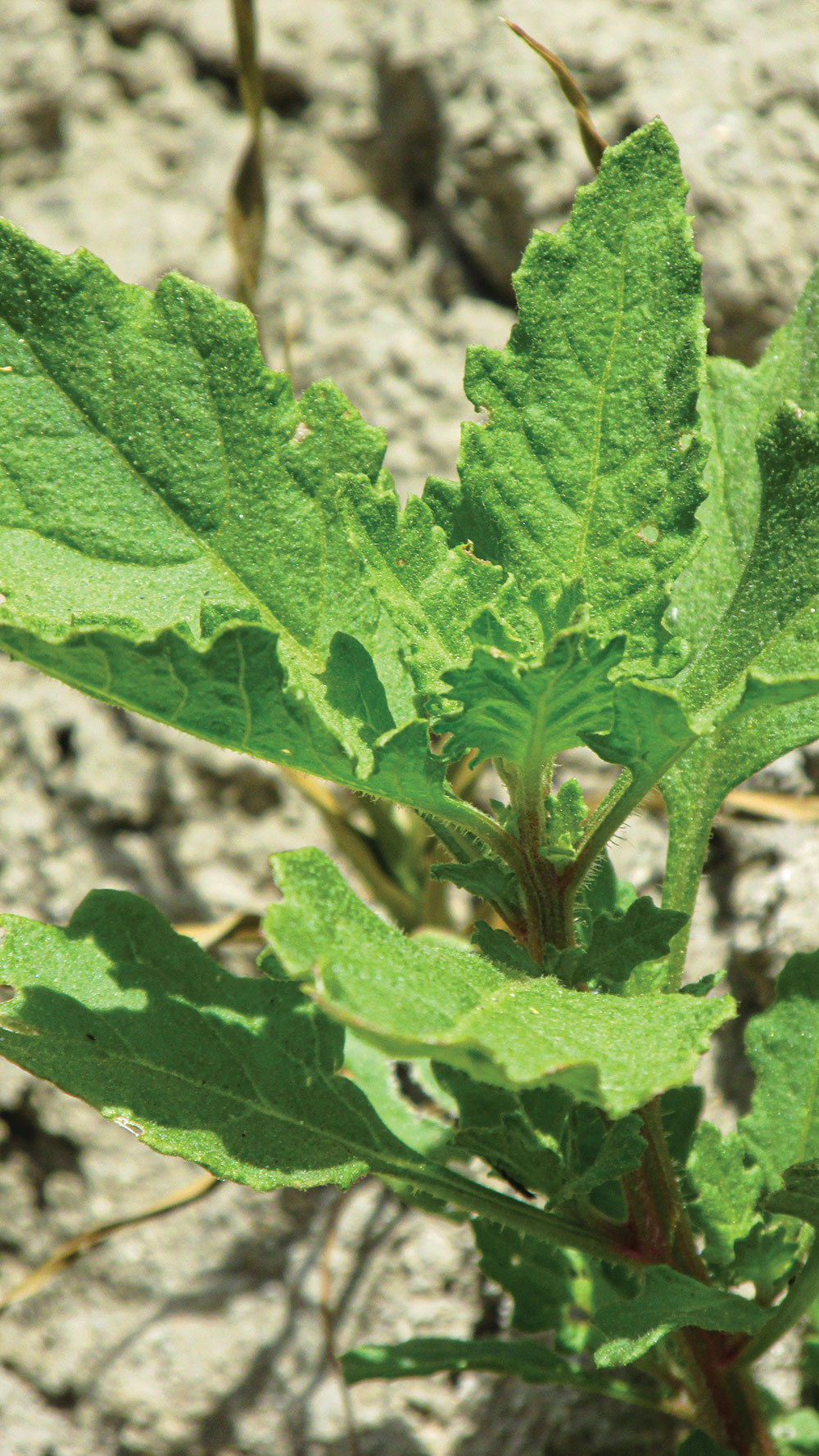
I’ve also had positive results using epazote to rid cats and dogs of worms: Simply sprinkle a small amount of the dried and powdered leaves into their food. And epazote seeds and leaves in chickens’ water will cure and prevent some diseases common to fowl. (Please consult your veterinarian first.)
CAUTIONS
Pure Chenopodium oil is toxic. However, epazote leaf contains only 1 percent of this oil, and such small amounts are ideal as a vermifuge or anti-flatulent.
The seeds contain approximately 10 percent oil of Chenopodium; a teaspoon or so of the seeds added to dog and cat food works wonders as a de-wormer and doesn’t pose a threat to the animal’s health in such a low dosage.
Eating moderate amounts of the cooked epazote greens poses no health hazard whatsoever. However, due to the strong aroma of epazote, it’s rarely cooked alone. Generally, epazote greens are mixed with other greens before cooking.
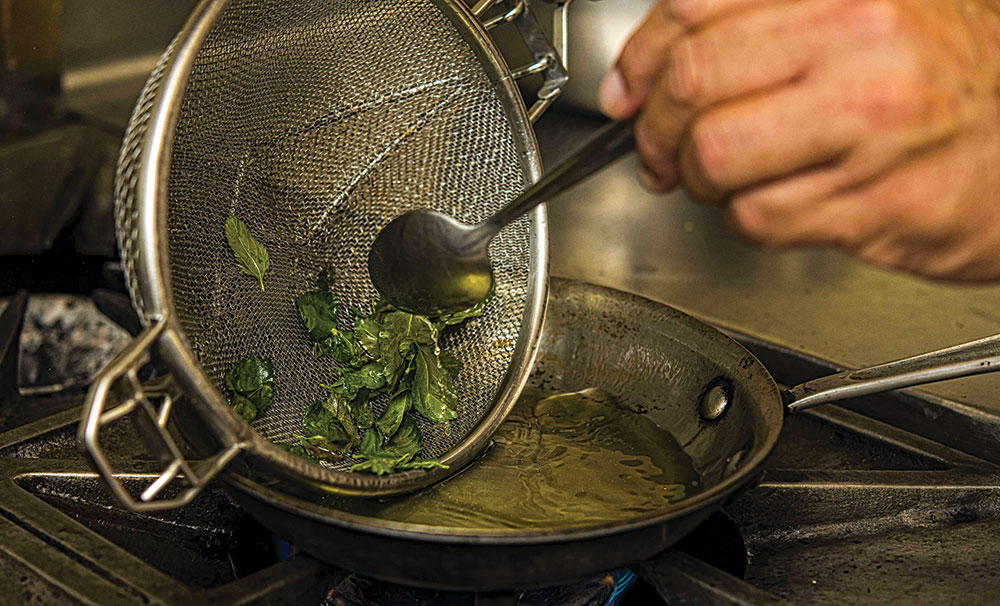
HERE TO OBTAIN
If epazote doesn’t grow in your area, its seeds are readily available from seed suppliers.
RECIPES
It’s easy to cook with epazote. You can add a tablespoon of its chopped stems and leaves when cooking a pot of beans. It can be used dried or fresh. In addition, epazote herb can be used to make tea and added to stews and soups. Powdered leaves can also be added to bean or potato salads, among others.
Maya Black Bean Soup
- Water
- 1 cup of black beans
- 3 onions, diced
- 3 potatoes, small, diced
- 2 teaspoons of epazote
- A pinch of sage
- A pinch of oregano
- Salt and pepper to taste
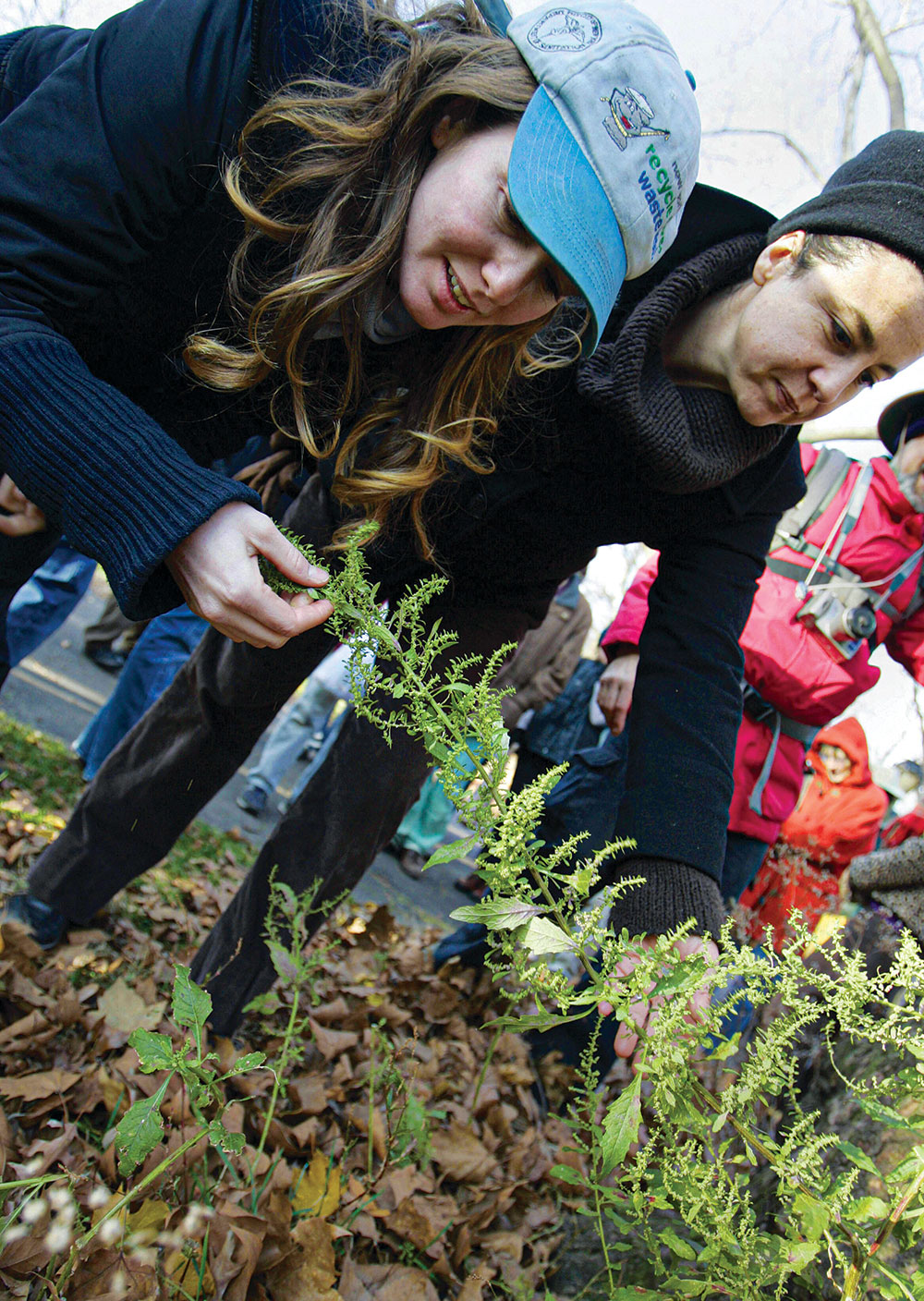
First, cook the beans until tender (about an hour). Next, add the onions and potatoes and cook until they’re tender. Add all the seasonings. Simmer on low heat for 15 minutes before serving. Serves 2 to 3.
Lentil Soup
- 5–6 cups water
- 1 cup of lentils
- 1 diced red onion
- 2 diced carrots
- 3 cloves of garlic
- 1 bay leaf
- 2 teaspoons of dried epazote
- Salt to taste
Wash the lentils and then add them to the water. Simmer for about 90 minutes. When the beans have nearly softened, add the other ingredients. Simmer until the vegetables are soft. Serves 2 to 3.
A version of this article first appeared in the September 2021 print issue of American Outdoor Guide.


